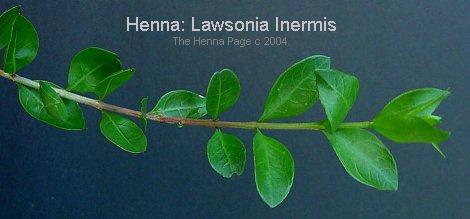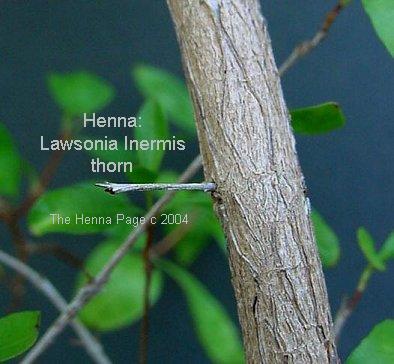Ancient Egyptian Pharmacopoeia:
The Ebers Papyrus
Catherine Cartwright-Jones c 2004
Kent State University
 The Ebers Papyrus was written around 1550 BCE in Thebes, Egypt. It is a compendium of 876 remedies, pharmacopoeia and doctors’ medicinal formulae gathered and catalogued at that time. It contains notes from at least forty different sources. The papyrus describes diseases and injuries, their symptoms, diagnosis, treatments, prescriptions, the preparation and administration of the remedies. Prayers and incantations frequently accompany the prescriptions. The Ebers papyrus was found in Thebes, in 1862 by Edwin Smith, and was subsequently acquired by University of Leipzig. The Ebers Papyrus has valuable historical and folkloric material on ancient Egyptian medical practice, but the remedies in it must not be taken as “medicine” in the modern sense, nor the remedies used except under the supervision of a licensed physician! Henna in the Ebers Papyrus
Pharmacopoeia
Henna is one of the 400 plants, minerals, and animal parts, used to create remedies in the Ebers Papyrus pharmacopoeia. In Egypt in 1500 BCE, henna was called Kupros, or Cyperus, depending on the author transliterating the consonant group KPR, the ancient Egyptian word for henna. The pharmacopoeia specifies seven forms of henna based on where it was harvested, the age of the plant, and the plant part. “Henna from the north”, “henna from the fields”, “henna from the meadow”, and “henna from the marshes”, specify henna harvested from locations with different soil and moisture levels. Soil and moisture affect henna’s Lawsone levels. Moist, fertile, cool conditions produce low Lawsone levels. Dry, hot, iron-bearing soils produce high Lawsone levels. “Knots of henna”, “thorns of henna” and “henna grass” are parts of the plant specific to age and growth cycle, which again have different characteristics. “Henna from the north” may either indicate henna from a northern arid desert area, which would have higher Lawsone level, or it might indicate henna from the marshy Nile Delta, which would have a lower Lawsone level. “North” could also indicate henna from a coastal area. Henna will tolerate salinized sandy soil, and grows close to the shores of the southeastern Mediterranean. That henna would not have high Lawsone levels, because coastlines don’t get as hot as the interior. Therefore, its unclear what “henna from the north” might have been like. “Henna from the fields” may have been henna at the edge of cultivated areas, where it is often grown as a windbreak. That henna would have received regular irrigation along with the field, so that henna might have not had as high a Lawsone content as henna from unirrigated soil. “Henna from the meadow” may have been plants growing in grazing areas. Meadows would not have been regularly irrigated, so henna from meadows would have had higher Lawsone content than that from fields. “Henna from the marshes” would have had abundant water, and relatively low Lawsone levels. “Knots of henna”, “thorns of henna” and “henna grass” refer to parts of the henna plant rather than their harvest location. “Knots of henna” might be the seed-filled berries or seedpods. Henna seeds were pressed for their oil, which was used as a liniment. “Thorns of henna” refers to the thorns that begin to grow when the plant is 3 years old, from which henna gets its name “Lawsonia Inermis” or “armed (as in having a weapon). “Henna grass” is the young shoots of the henna plant as they grow from seed. In specifying different sorts of henna, the physicians understood that hennas from different microclimates had different Lawsone levels, and different parts of the plants had different properties.  Remedies that Required Henna
The uses of henna in the Ebers Papyrus are consistent with what we know of the henna now. Henna has differing levels of Lawsone during different growth periods of its life cycle, and in different soils and available moisture. Dry, hot, iron-bearing soils produce henna with high Lawsone levels. Moist, fertile soils produce henna with lower Lawsone levels. The tannins in henna bind with keratin in the skin, making the skin stronger and resistant to desiccation (Stankiewicz, et al, 1997). Lawsone may be mildly anti-inflammatory (Yogisha, et al, 2002), and is effective against ringworm and other fungal skin diseases (Bosoglu et al, 1998). In the Ebers Papyrus, henna is used for skin diseases, as opposed to respiratory, heart or circulatory diseases, so the use seems to be knowledgeable and appropriate. One remedy for “scabs in every limb” features henna. “Scabs in every limb” could be ringworm, or another fungal skin disease, or it could be some other source of open lesions. In any case, this indicates broken skin. Henna will stain broken skin permanently. The remedy for “scabs in every limb” is “Henna from the marshes, henna from the fields, henna knots and red grain, crushed in oil, goose oil and semen.” Except for the addition of semen and red grain, this seems to be a straightforward henna paste, but one that would have minimal stain. Henna from the marshes would not have been dark-staining henna because abundant moisture does not favor high Lawsone content. If henna from the fields was from irrigated fields, it also would not have been dark-staining henna. Oil mixed into henna paste (goose oil and henna seed oil) would also have inhibited the stain. This seems to indicate the paste was made to be applied frequently to reinforce anti-fungal anti-inflammatory effects and, with minimal skin staining. If body art quality henna paste was applied to broken skin, the basal layer of the skin would permanently stained. This may, then, be well thought out, carefully observed, and effective treatment for ringworm, or other condition with broken skin, making use of henna’s anti-fungal properties, while minimizing skin staining. Another treatment “to allay itching from all limbs” was a paste of “henna from the meadow, onion meal, incense, and wild date juice”. The instructions were “make into one and apply to the scurvy place”, implying that the practitioner would make and apply this henna paste topically. Henna from the meadow could have had higher Lawsone content than henna from the fields because fields were irrigated and meadows were not: high Lawsone content favors low moisture. In this paste, the onion meal was antibacterial, (Aburjai and Natsheh, 2003) and could also have served as a “terp”. The incense was certainly a “terp”. Wild date juice was the sour/sugar ingredient common to most henna pastes. Therefore, this paste was not very different from body art henna pastes, except for the onion. Henna has been used to treat psoriasis and eczema (Aburjai and Natsheh, 2003), which could have been the source of the “itching from all limbs”. If the skin was itching, but not broken (as the “scabs in every limb”, then higher quality henna (from the meadows) could be used without concern over permanent skin staining. The writer of the Ebers Papyrus writer commented on this remedy’ “Look to it because this is the true remedy. It was found among the proven remedies in the temple of the God Osiris. It is a remedy, which drives away the scurf in every limb of a person. Yes, it heals at once. You see.” Osiris’s recommendation was certainly an excellent guarantee of quality and reliability! “Diseased toes” was a common complaint, with several remedies depending on the severity of the condition. It could have been a fungal or bacterial infection from working in muddy irrigated fields, or problems from conditions such as cracked and infected calluses. For “diseased toes”, the physician made a poultice of fennel, wax, incense, henna, wormwood, dried myrrh, poppy plantings and cuttings (raw opiate), elderberries, berries of the uan tree, resin of acanthus, dough of acanthus, resin of mafet tree, grain (small pieces of wood) of aloes (aloes wood), fat (resin) of the cedar tree, fat (resin) of the uan tree, fresh olive oil, and water from the rain of the heavens. This would have created a mildly acidic “terped” henna paste. The “terps” in the paste were fennel, incense, wormwood, myrrh, acanthus resin, mafet tree resin, bits of Aloe wood, cedar tree resin, and uan tree resin. These may also have been antibacterial and antifungals. A more acidic paste might have been painful on open wounds. The paste had olive oil that would have soothed dry skin, and an opiate for pain relief. Henna was also part of a remedy for “blisters in the teeth”. These were treated with a paste of incense, crocus, henna, onions, aloes wood and several other herbs that have not been translated. This paste is similar to a normal henna paste, and would be palatable to a person who enjoys onions. If henna is anti-inflammatory ( Ali, et al, 1995), and the onion is anti-bacterial ( Aburjai and Natsheh, 2003), the paste may have been useful. Rural North African people still use henna twigs as toothpicks to keep their gums and teeth healthy. However, not all remedies including henna seem so sensible. The paste for “bleary eyes” begins with myrrh, onions, verdigris, clear oil, and henna from the north. At that point in the mix, nothing seems very unusual. However, the remedy continues to include antelope dung and entrails of the quadit animal, all to be mixed into the paste and painted onto the eyes with a Vulture’s feather. The latter ingredients are unusual in contemporary henna pastes. The Ebers Papyrus mentions of henna are intriguing in that they show careful observation of the differences in the henna plant according to where it is grown, and the plant part, and the resulting different effects. They also had observed that henna can reduce inflamation and fungal diseases, and can strengthen skin. They recognized that aromatic plants, oils and resins make a difference in henna pastes. The Egyptians did not seem to be using henna for body art in 1550 BCE as did their adversaries and neighbors, the Libyans, Tunisians, Canaanites and Syrians, but they did make use of its functional properties! Online Resources for The Ebers Papyrus: http://www.egyptologyonline.com/Medicine.htm http://www.whonamedit.com/synd.cfm/443.html http://www.nlm.nih.gov/hmd/breath/breath_exhibit/MindBodySpirit/IIBa18.html http://www.indiana.edu/~ancmed/egypt.HTM References Aburjai and Natsheh, 2003 Plants used in Cosmetics Phytotherapy Research 17, 987 – 1000 Ali B.H, Bashir A. K., Tanira M.O.M., 1995 Anti-Inflammatory, Antipyretic, and Analgesic Effects of Lawsonia inermis L. (Henna) in Rats Pharmacology 1995; 51: 356 – 363 Bosoglu A., Birdane F., and Solmaz H., 1998 The Effect of Henna (Folium Lawsonia) Paste in Ringworm in Calves Department of Internal Medicine, Faculty of Veterinary Medicine, Selcuk University, Konya, Turkiye Indian Veterinary Journal 75, January Bryan, C. Ancient Egyptian Medicine: The Papyrus Ebers Ares Publishers Inc First published London 1930 Chicago 1974 Stankiewicz A., Hutchins J., Thomson R., Briggs D., Evershed R., 1997 Assessment of Bog-Body Tissue Preservation by Pyrolysis-Gas Chromatography/Mass Spectrometry Rapid Communications in Mass Spectrometry, Vol. II, 1884 – 1890 S. Yogisha, D.S. Samiulla, D. Prashanth*, R. Padmaja, A. Amit, 2002 Trypsin inhibitory activity of Lawsonia inermis Fitoterapia 73 (2002) 690–691 Can't
find what you want here?
Try The Henna
Page
Main Index. |